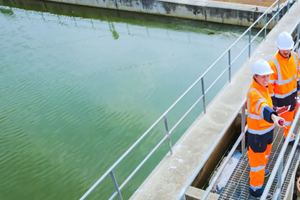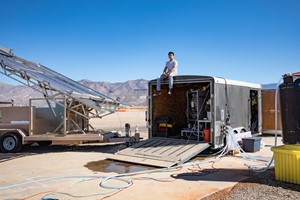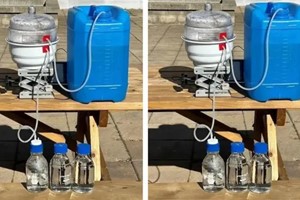The global water crisis continues to challenge various regions worldwide, exacerbated by burgeoning populations and the impacts of climate change. As delineated by the World Health Organization, over half of the global populace encounters severe water scarcity during specific periods annually, underscoring the urgency for sustainable solutions.
In response to this pressing predicament, desalination emerges as a promising avenue for addressing water scarcity, particularly in arid coastal areas. Historically, desalination processes were economically burdensome, primarily reliant on thermal methods with production costs exceeding $3 per cubic meter. However, the advent of reverse osmosis technology revolutionized the landscape, rendering desalination more economically feasible.
The contemporary desalination paradigm employs reverse osmosis technology, wherein water traverses a semi-permeable membrane to expunge salts, minerals, and impurities. This technological evolution significantly reduces production costs, with modern plants requiring approximately $400 million for construction to purify 500,000 cubic meters daily. When factoring installation, operational expenses, and capital returns, the cost per cubic meter plummets to an impressive $0.30.
Moreover, advancements in renewable energy, particularly the proliferation of cost-efficient solar power, have further propelled the viability of desalination. With energy-intensive desalination processes becoming increasingly powered by solar plants, operational costs have plummeted. Notably, the Hassyan project in Dubai epitomizes this trend, offering desalinated water at a remarkable $0.37 per cubic meter, a fraction of the cost of conventional methods.
The economic attractiveness of desalination extends beyond the Middle East, with countries like Egypt, Algeria, and Morocco investing in new plants to address water scarcity. Notably, desalination also presents a cost-effective alternative to transporting water over extensive distances, with infrastructure costs becoming prohibitive beyond the 500-kilometer threshold.
Despite these advancements, it is imperative to acknowledge the limitations of desalination as a panacea for the global water crisis. Many regions experiencing water scarcity face transient or sporadic shortages, diluting the cost-effectiveness of large-scale infrastructure investments. Moreover, the agricultural sector, a major water consumer, necessitates affordable water to sustain crop production.
Nevertheless, industry leaders such as ACWA Power, Acciona, and Veolia are strategically positioned to capitalize on the burgeoning desalination market. Through continued innovation and strategic investments, these pioneers are poised to navigate the competitive landscape and contribute meaningfully to alleviating water scarcity challenges.
In summation, while desalination holds immense promise as a solution to water scarcity, its widespread adoption necessitates ongoing technological advancements, strategic investments, and collaborative efforts across industries and geographies.














